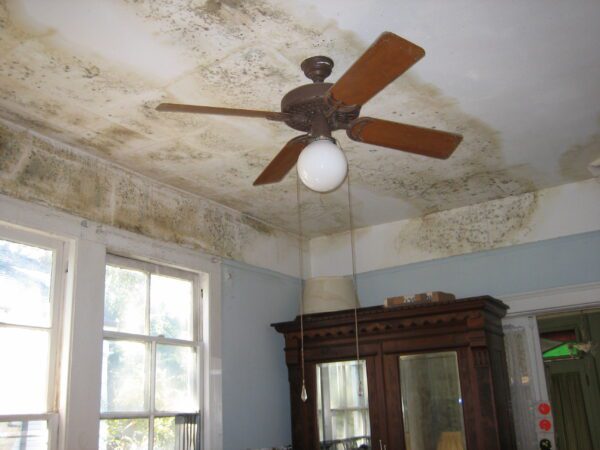Mouldy Manny: How bad for you is a mouldy house?
By Ivan Paul

Mouldy houses are a ubiquitous part of student life up and down the country. Mould thrives in damp, cold conditions, and can quickly spread throughout entire rooms or properties if left unchecked. It looks disgusting, can smell disgusting, and might even start colonising your possessions if you’re unlucky.
How bad is mould really?
Worse still, the presence of dampness and mould in homes has been associated with a number of health issues, such as the development and exacerbation of asthma, coughing, wheezing, shortness of breath, respiratory infections, and eczema. These symptoms have been observed in healthy people. But, the symptoms are much more common in those more susceptible to illness, such as the elderly, children, those with asthma, and people with allergies.
As a damp environment is crucial for mould to take hold, addressing any sources of dampness in your home is the first step to tackling a mould problem. The mould itself, or the material it’s growing on, can then be cleaned up. A fresh coat of paint containing an anti-fungal agent should then prevent all but the most aggressive moulds from returning.
Persuading a landlord to do this, however, is not always easy, even though the World Health Organisation specifically put the responsibility for a mould-free home on property owners. They also describe healthy indoor air as a basic right, illustrating how important it is to keep our homes in good condition.
Mouldy mental health
To anyone that has lived in a mouldy student house, it might seem obvious that the poor living conditions get you down. However, scientists have found that damp and mouldy homes are associated with symptoms of depression.
The study included eight cities throughout Europe, each varying in geography, climate, and culture. Previous studies have focused on homes within the UK, but this research sought to generalise the results. Additionally, in agreement with these previous studies, the researchers found that damp or mouldy living conditions are associated with a moderately increased risk of depression. This was consistent over all the different cities observed.
The authors suggest that living in a mouldy home can lead to feeling out of control of your living situation, which can then contribute to symptoms of depression. They also propose that the physical health effects of living with mould and dampness may further link poor living conditions and depressive symptoms.
Although a moderate association was found, it is important to note that the design of this study meant it was not possible to establish a causal relationship between mould and depression. Further research is needed to determine whether a causal link exists.

Long-term exposure
If building managers don’t take measures to control mould, and if that leaves people living in infested properties for extended periods of time, the effects can become more severe than just respiratory irritation.
The death of two-year-old Awaab Ishak is one such example. Awaab died in December 2020 from acute airway oedema with severe granulomatous tracheobronchitis – a combination of inflammation of the airways and a build-up of fluid, both of which ultimately prevented him from breathing.
The coroner’s report attributed this to long-term exposure to mould in his family home. The issue had been brought to the management of the building on multiple occasions by the family, but nothing was done about it. Alarmingly, an investigation by the Manchester Evening News in 2022 revealed that many other residents on Awaab’s estate were still living in flats blighted by mould and damp, despite repeatedly reporting the situation to Rochdale Boroughwide Housing – the company responsible for the properties.
Issues with mould are often ignored by landlords, or the problem is simply painted over only to return in a few months. This case, albeit an extreme one, clearly shows damp and mould can have serious consequences for vulnerable people and that it is vital landlords are proactive in addressing these issues to prevent long-term risks to their tenant’s health.
Toxic or not? The case of black mould
It has become ‘common knowledge’ that black mould is especially bad for you, due to the toxins it releases. There is very little scientific evidence to support this claim, which was primarily introduced into the public psyche through the media hysteria of the 90s.
The hysteria was initiated by a cluster of infant deaths in the Cleveland Children’s Hospital between 1993 and 1994. Ten children died of acute pulmonary haemorrhage, a condition that can lead to fatal bleeding in the lungs. A Centers for Disease Control (CDC) report suggested these deaths were linked to household exposure to Stachybotrys chartarum, otherwise known as black mould.
A series of studies were published during the late 90s that agreed with this association. The media then took notice, and the juicy news story of “toxic black mould” ballooned to immense proportions. “Toxic black mould” has since become embedded in popular culture, and it is regularly reported to be extremely bad for public health, even by reputable news sources.
But, if you begin to delve into the scientific literature, you find papers with titles such as “Toxic Mold: Phantom Risk vs Science”, “The Myth of Mycotoxins and Mold Injury”, and “Mold and Human Health: A Reality Check”, all of which describe the lack of evidence for black mould toxicity in the home.
The CDC later retracted their paper suggesting a link, and now their website reads: “To date, a possible association between acute idiopathic pulmonary haemorrhage among infants and Stachybotrys chartarum has not been proven.”
Although that patch of black mould in your bathroom isn’t as toxic as you might have thought, it’s still probably worth texting your landlord again about getting it sorted – no one deserves to be living in a home full of mould.







